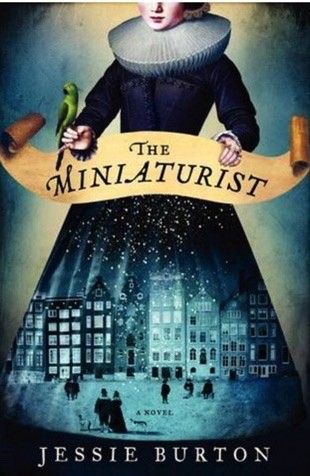Let’s Review: The Miniaturist by Jessie Burton
Things aren’t always as they seem at the Brandt household…

Things aren’t always as they seem at the Brandt household…
Rating: ⭐️⭐️⭐️⭐️
Synopsis:
The book begins with our protagonist, Nella Oortman, arriving in Amsterdam in the fall of 1686, where she is set to meet her new husband and his household. Johannes Brandt is very polite and hands-off with Nella, often neglecting to pay much attention to her. This leaves Nella in the clutches of Marin Brandt, Johannes’s sister. A combination of Marin’s icy attitude and Johannes’s dismissive nature make Nella feel as if she is not welcome there.
Then, out of the blue, Johannes purchases a miniature replica of the house for Nella as a wedding gift. The details are intricate and expertly crafted. Nella employs the help of a local miniaturist to make decorations for the house, and soon enough, she receives those requests along with other items that she did not ask for…
The Brandts host two house servants: Cornelia, the quick-tongued and snooping maid, and Otto, the loyal and quiet manservant. As the months pass by, Nella discovers that each household member holds their secrets, including herself, which can bring ruin to the family.
She keeps receiving gifts from the miniaturist, reflecting events that did not happen yet. Nella soon learns how to dodge her sister-in-law’s erratic moods, her husband’s frequent absences, and the miniaturist’s gifts that seem to predict events that have yet to pass.
SPOILERS UP AHEAD. READ AT YOUR OWN RISK!
What I liked:
1. Friendship between Johannes and Nella
After discovering her husband engaging in sexual acts with a man, Nella was shell-shocked for a good portion of the book. Sodomy is considered a crime punishable by death in seventeenth-century Amsterdam, but Nella was more troubled that she won’t be playing the role of a normal wife. He won’t love her the way a husband is “supposed” to love his wife. Knowing this, she gets to know her husband, and they develop a beautiful friendship.
I enjoyed how affectionate and understanding they were of one another and how she did grow to care for him. Johannes made sure she was taken care of for the short time they were together, and deep inside, Nella was relieved that none of the “wifely” duties that she was warned of were expected from her.
“Then where is home, Johannes?” He looks at the maps on his wall. “I don’t know,” He says. “Where comfort is. And that is hard to find.”
2. Marin Brandt
Perhaps the character with the most secrets, Marin Brandt represented a dichotomy of what a woman was supposed to do versus what she wanted for herself. Towards the end of the story, we find out that Marin asks Johannes to turn down Frans’s marriage proposal because she was already the boss of her household when her brother was traveling. She refused to give that up, so Johannes took the fall for her and told Frans that he decided to refuse the match. I found kinship with Marin because if I were in her situation, I wouldn’t want to marry when I have more agency on my own.
Marin presents herself as a pious woman yet hides her pregnancy from everyone in the house up until she was in labor. She did what she had to do to protect herself, Otto, and their child. Her character was fully realized, and it was a joy to watch her unfold.
“She never married,’ Pellicorne says. ‘A waste.’ For some of us, Nella thinks, it’s a waste to be married.”
3. Writing Style
The writing style took time for me to get used to, but I later liked it. Burton writes very lyrically, especially in the first 50 pages. The prose got easier to understand as the story progressed, and I found myself enjoying the vibe I got from the storytelling.
“Words are water in this city. One drop of rumour could drown us.”
What I wished the author did differently:
1. More closure with the ending
The ending progresses quite rapidly, and we do not finish the story with many resolutions. I understand that the author wanted her readers to have their interpretation of the ending. Still, I would have liked a little more information on how the miniaturist could predict the future and how she managed to do this with numerous women in the city. Perhaps it’s just the curiosity in me that wants all the answers.
2. Created a chapter that mirrored the prologue
The most confusing part of the novel was the prologue, and I wished that the author included a chapter to bring the story full circle. I reread the prologue after finishing the book and am still a tad puzzled about what happened.
All in all, I had a great time reading The Miniaturist and would recommend this to historical fiction lovers.